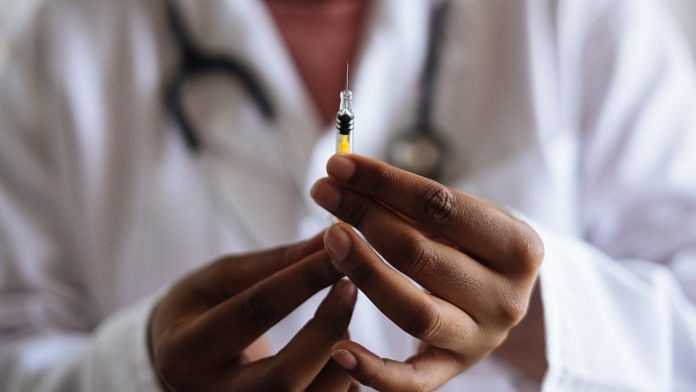
New Delhi: US pharmaceutical giants Pfizer and Moderna have claimed an efficacy of more than 90 per cent for their respective Covid-19 vaccines. Meanwhile, Russia’s Sputnik-V vaccine, whose first batch is to arrive at a medical college in Kanpur, claims to be 92 per cent effective.
In episode 620 of ‘Cut The Clutter’, ThePrint’s Editor-in-Chief Shekhar Gupta explains the significance of these vaccine candidates and what vaccine efficacy means.
“The virus is still rampant but it looks like humankind is now finding an answer to it,” said Gupta, adding that the common flu vaccine is 40-60 per cent effective, therefore, anything above 90 is “fantastic”.
He noted that the reason for this relatively faster vaccine development is because scores of research papers on the virus were already available and governments and world’s scientists “put their heads together” to find a solution.
What above 90% efficacy means
When a vaccine is claimed to be 90 per cent effective, it does not mean that if you give the vaccine to a hundred people, 10 will get sick and 90 won’t, explained Gupta.
The Covid-19 vaccine trials are far more complicated than that since it is not ethical to expose the trial population to such a deadly virus. In phase 3 trials, the companies carried out double-blinded trials where half the trial population was given the vaccine and the other were administered a placebo. A double-blinded trial is where neither the volunteers nor the researchers know who has been administered the vaccine.
“Since we are already living in an environment where viruses spread, scientists waited for a period of time and followed certain protocols to see which participants caught the virus,” noted Gupta.
Out of this group of positive cases, they identified those who were administered the vaccine and then arrived at the level of efficacy.
Pfizer aims to complete its research once 164 positive cases emerge from their sample size of 43,500 people. However, at the midpoint of the trial — 94 positive cases — the company looked at early data and arrived at the figure of 90 per cent efficacy.
Similarly, Moderna arrived at their figure of 94.5 per cent efficacy by reviewing early data once they hit a midpoint of 95 cases. The company aims to complete their research once 151 positive cases emerge from their sample of 30,000 people.
“Sputnik 5 has made a claim of 92 per cent efficacy at too low a level,” remarked Gupta.
Their target was a sample of 40,000 people but they secured only 16,000, out of which only 20 positive cases have emerged.
“They saw Pfizer come up with their claim of 90 per cent, so they also jumped the gun a little bit,” Gupta said.
Types of vaccines
Moderna and Pfizer produced the first-ever authorised vaccines that consist of mRNA.
Messenger RNA, or mRNA, instructs cells to produce many substances that allow the body to function. These vaccines use carefully designed mRNA strands to teach cells to create a modified version of a key coronavirus protein, prompting an immune response that can fend off the real virus.
“It’s a bit like having a whistleblower in your body,” observed Gupta.
When our body receives the RNA, it behaves like a “messenger”. It travels to the structure of a cell to warn it of a potential invader and then instructs ribosomes of the cell to produce the same spike protein of the virus until the body naturally starts to produce antibodies.
Gupta explained that this type of advanced biotechnology allows you to scale data and are new routes to create vaccines. “If this works, it’s quite possible that this will be the last pandemic in human history,” he said.
However, the Russian vaccine is of an “older generation” which makes use of an adenovirus protein — a weakened common cold virus — just like Oxford’s AstraZeneca vaccine.
Sputnik-V uses two adenoviruses — 26 and 585. “Two vectors are better than one if your body, for some reason, rejects one … or it doesn’t last long enough, the second one will,” explained Gupta.
Watch the latest episode of CTC here:
Subscribe to our channels on YouTube & Telegram
Why news media is in crisis & How you can fix it
India needs free, fair, non-hyphenated and questioning journalism even more as it faces multiple crises.
But the news media is in a crisis of its own. There have been brutal layoffs and pay-cuts. The best of journalism is shrinking, yielding to crude prime-time spectacle.
ThePrint has the finest young reporters, columnists and editors working for it. Sustaining journalism of this quality needs smart and thinking people like you to pay for it. Whether you live in India or overseas, you can do it here.